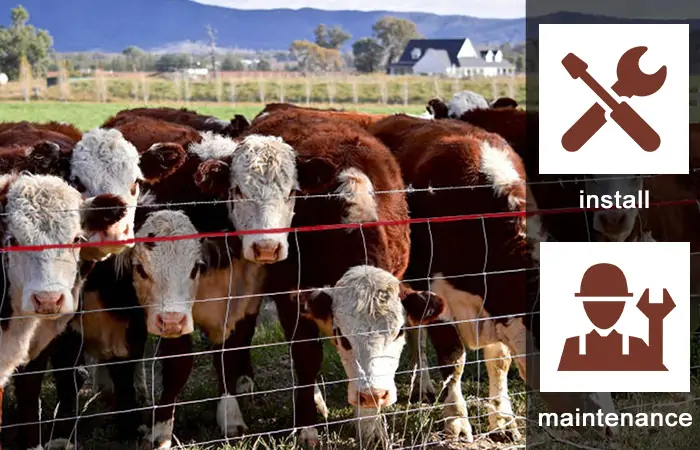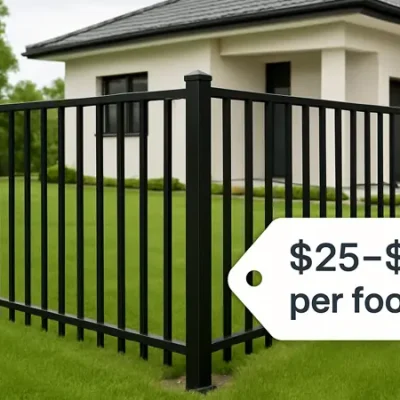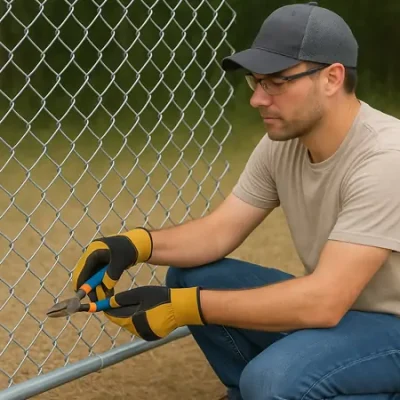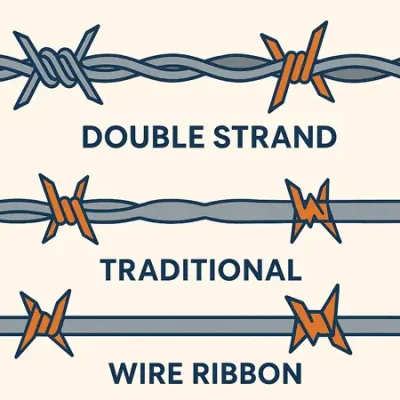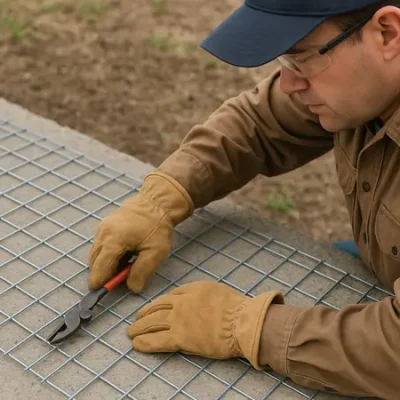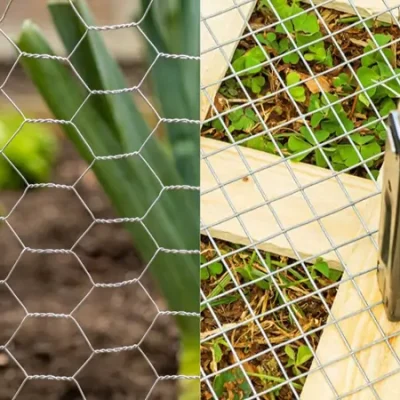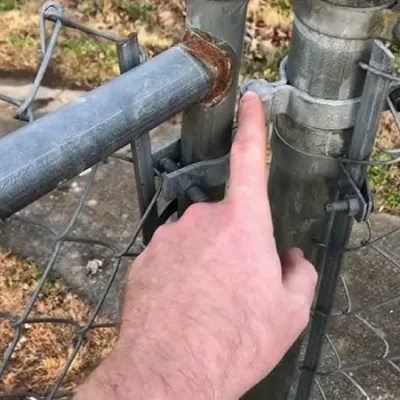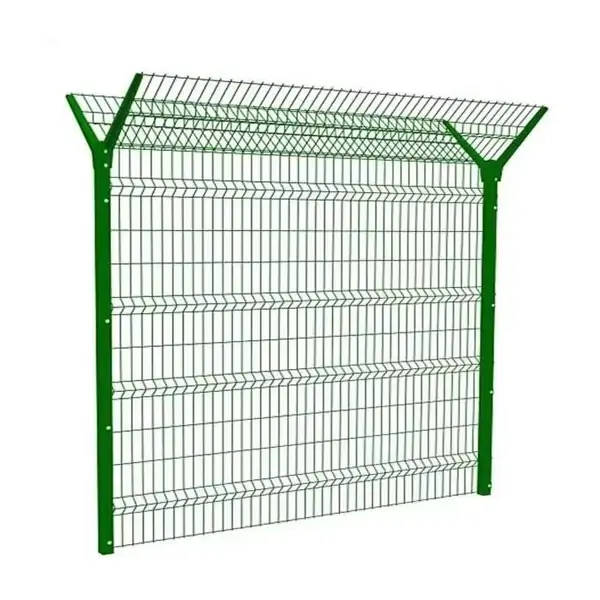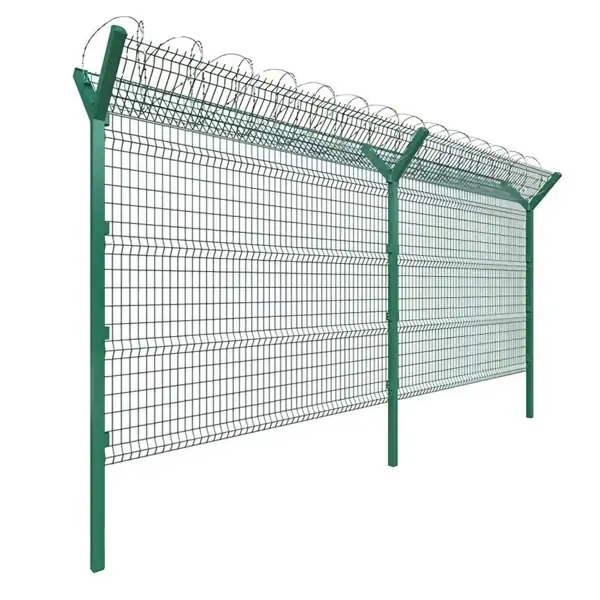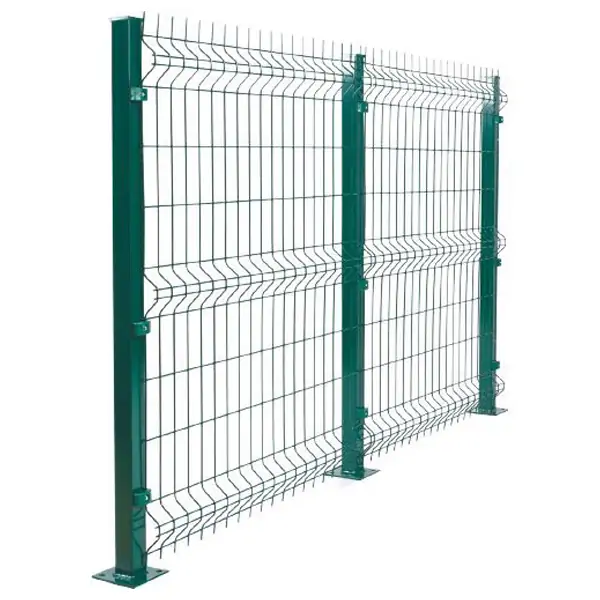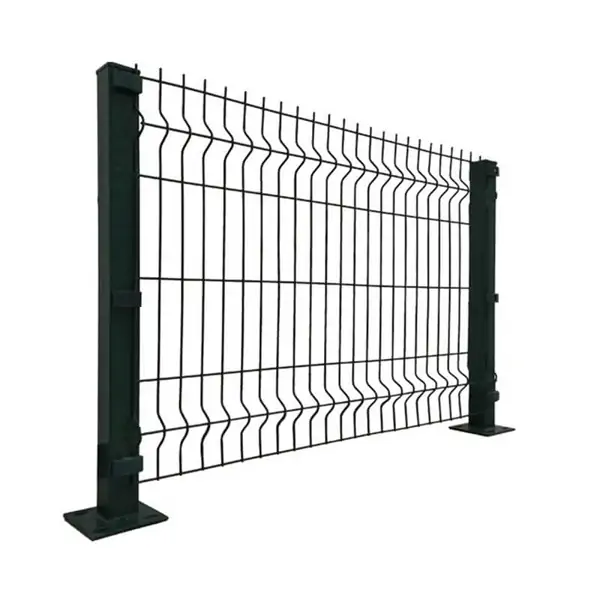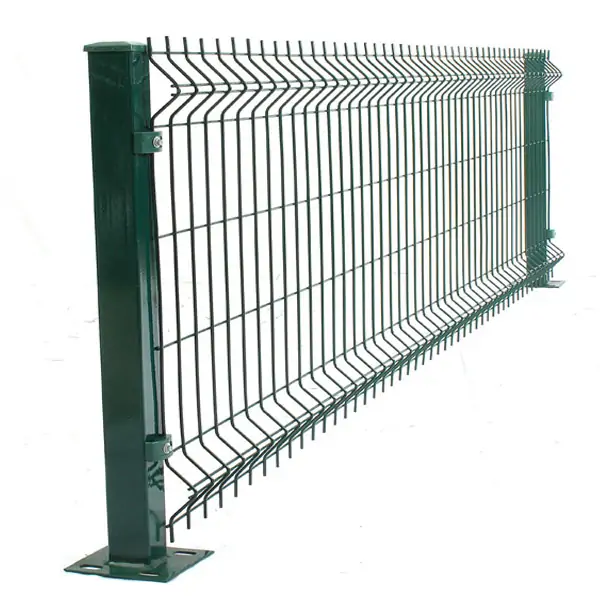If you’re a farmer or rancher, you know the importance of keeping your livestock safe and secure. One of the most effective ways to do this is by installing a woven wire cattle fence. Woven wire fences are durable, long-lasting, and offer excellent containment for livestock. In this complete guide, we’ll cover everything you need to know about woven wire cattle fences, including installation and maintenance tips.
Table of Contents
ToggleWhat is a Woven Wire Cattle Fence?
A woven wire cattle fence is a type of fence made from interlocking wires that create a strong, durable barrier. These fences are commonly used in agricultural settings to enclose livestock, such as cattle, horses, and sheep. Woven wire fences are known for their strength, durability, and ability to withstand the wear and tear of livestock.
Woven wire fences come in a variety of materials, including galvanized steel and stainless steel. Galvanized steel is a popular choice for its affordability and durability, while stainless steel offers superior corrosion resistance and is ideal for areas with high humidity or saltwater exposure.
Benefits of Using a Woven Wire Cattle Fence
There are several benefits to using a woven wire cattle fence, including:
- Durability: Woven wire fences are made from strong, interlocking wires that create a durable barrier. This makes them ideal for enclosing livestock that may try to push or rub against the fence.
- Strength: The woven design of these fences provides exceptional strength and stability. This means that they can withstand high winds, heavy rains, and other adverse weather conditions.
- Visibility: Woven wire fences are highly visible, which helps to deter livestock from trying to escape. They also allow farmers and ranchers to easily see what’s happening on the other side of the fence.
- Longevity: With proper maintenance, woven wire fences can last for many years. This makes them a cost-effective solution for enclosing livestock.
Choosing the Right Woven Wire Fence for Your Needs
When choosing a woven wire fence for your livestock, there are several factors to consider, including:
- Material: As mentioned earlier, woven wire fences come in a variety of materials, including galvanized steel and stainless steel. Consider the climate and environmental conditions in your area to determine the best material for your needs.
- Height: The height of your fence will depend on the type and size of livestock you’re enclosing. For cattle, a fence that is at least 4 feet tall is generally sufficient. However, if you’re enclosing larger livestock, such as horses, you may need a taller fence.
- Gauge: The gauge of the wire refers to its thickness. A lower gauge number indicates a thicker wire, which is more durable and stronger. Consider the weight and size of your livestock to determine the appropriate gauge for your fence.
- Mesh Size: The mesh size refers to the distance between the wires in the fence. A smaller mesh size will provide better containment for smaller livestock, while a larger mesh size may be more suitable for larger animals.
Installing a Woven Wire Cattle Fence
Installing a woven wire cattle fence may seem like a daunting task, but with the right tools and instructions, it can be a relatively straightforward process. Here are the steps you’ll need to follow:
- Prepare the Site: Begin by clearing the area where you plan to install the fence. Remove any debris, rocks, or plants that could interfere with the installation process.
- Set Posts: Use post-hole diggers to create holes for your fence posts. The depth and spacing of the holes will depend on the type of soil and the height of your fence. Insert the posts into the holes and use a tamper to pack the soil around them.
- Attach the Wire: Begin by attaching the bottom wire to the posts. Use wire clippers to cut the wire to the appropriate length and then use pliers to twist it around the posts. Continue attaching the wires, working from the bottom up, until you reach the top of the fence.
- Stretch and Secure: Use a come-along or tensioner to stretch the wires tightly between the posts. Secure the wires to the posts using wire ties or staples.
- Trim and Finish: Trim any excess wire using wire clippers and then use a wire brush to clean off any debris or rust from the fence.
Maintaining Your Woven Wire Cattle Fence
Proper maintenance is essential to ensuring that your woven wire cattle fence remains strong and durable for many years. Here are some tips for maintaining your fence:
- Inspect Regularly: Regularly inspect your fence for signs of wear and tear, such as rust, broken wires, or sagging. Address any issues promptly to prevent them from becoming larger problems.
- Repair Damage: If you notice any damage to your fence, such as broken wires or rusted posts, repair it as soon as possible. This will help to prevent livestock from escaping and keep your fence in good condition.
- Clean the Fence: Periodically clean your fence using a wire brush or pressure washer to remove debris, dirt, and rust. This will help to prolong the life of your fence and keep it looking its best.
- Check Tension: Regularly check the tension of the wires in your fence. If they become loose, use a come-along or tensioner to stretch them tightly again. This will help to prevent sagging and keep your fence strong.
FAQ
How long does woven wire fence last?
All woven wire shall be new, fixed knot, high tensile steel, with class 3 galvanizing, aluminum coating, zinc-aluminum coating or better. So if properly installed, properly galvanised, it should give you 20 years.
Can you use a horse fence for cattle?
Of course you can. You can keep any animal!
Do cattle fence posts need concrete?
Correct installation of a fence post is where precision meets practice. For robust pipe fencing for cattle, this means using concrete where necessary, setting the posts straight and making sure they are spaced uniformly. This part of the installation ensures that the fence serves its intended purpose.
What is the hardest part of installing a fence?
The hardest part of building a fence is digging and setting the posts. This crucial step requires precision, strength, and often specialized tools to ensure the fence’s stability and longevity.
Conclusion
A woven wire cattle fence is a durable, long-lasting, and effective way to enclose livestock. By choosing the right material, height, gauge, and mesh size for your needs, and following the proper installation and maintenance procedures, you can ensure that your fence remains strong and reliable for many years. With this complete guide to woven wire cattle fences, you’ll have all the information you need to make an informed decision and keep your livestock safe and secure.

